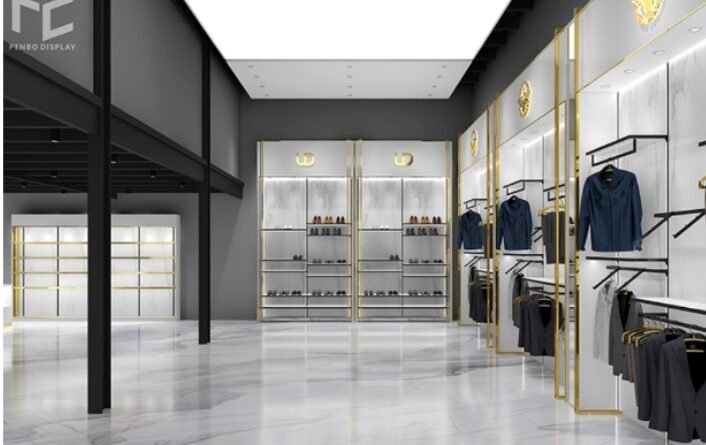10 Must-Have Clothing Store Fixtures to Enhance Your Retail Space
In the competitive world of fashion retail, creating an inviting and functional environment is crucial for attracting and retaining customers. One of the most effective ways to achieve this is by carefully selecting the right clothing store fixtures. These fixtures not only support the overall aesthetic of your store but also enhance the shopping experience, ultimately driving sales. This article will explore the ten must-have clothing store fixtures to elevate your retail space, supported by industry insights and data on market trends and consumer behavior.
1. Display Tables
Display tables are a versatile and essential fixture in any clothing store. They offer a prominent platform for showcasing seasonal items, bestsellers, or promotional products. According to a report by Statista, well-organized displays can increase product visibility by up to 25%, which can significantly boost impulse purchases. Moreover, the flexibility of display tables allows for easy reconfiguration to keep the store layout fresh and engaging.
2. Mannequins
Mannequins are more than just static figures; they are a visual merchandising powerhouse. They help customers visualize how clothes will look when worn, which can increase the likelihood of purchase. A study by the Retail Industry Leaders Association (RILA) found that stores with well-dressed mannequins see a 32% higher conversion rate compared to those without. Mannequins also play a pivotal role in highlighting fashion trends and new arrivals.
3. Shelving Units
Shelving units are essential for maximizing vertical space and keeping the store organized. These units should be adjustable to accommodate different product sizes and styles. According to the Global Retail Trends Report, efficient use of space through vertical shelving can improve a store’s visual appeal and product accessibility, enhancing the overall shopping experience.
4. Clothing Racks
Clothing racks are a staple fixture, providing easy access to garments and supporting the overall flow of the store. They should be strategically placed to create a logical and intuitive shopping path. Research by the National Retail Federation (NRF) indicates that stores with well-organized racks experience a 15% increase in customer satisfaction, as shoppers can quickly find what they are looking for.
5. Checkout Counters
The checkout counter is a critical point of interaction between the customer and the store. It should be well-designed to facilitate smooth transactions and minimize wait times. A study by PwC highlights that a well-organized checkout area can reduce perceived waiting time by 30%, which is crucial for maintaining a positive customer experience. Integrating digital payment options and loyalty program sign-ups can further enhance this space.
6. Fitting Rooms
Fitting rooms are a key touchpoint in the shopping journey. They should be spacious, well-lit, and equipped with mirrors and seating. According to a survey by the International Council of Shopping Centers (ICSC), 68% of customers are more likely to purchase if they try on items in a fitting room. Ensuring a comfortable and private environment can significantly impact sales and customer satisfaction.
7. Accent Lighting
Lighting plays a crucial role in creating the right ambiance and highlighting key products. Accent lighting can draw attention to featured displays and enhance the visual appeal of the store. The Retail Design Institute emphasizes that well-placed lighting can increase product visibility by 20%, influencing purchasing decisions. LED lights are a popular choice for their energy efficiency and versatility.
8. Digital Signage
Digital signage is an increasingly popular fixture for modern clothing stores. It allows for dynamic content display, such as promotional videos, advertisements, and social media feeds. According to a report by Grand View Research, the global digital signage market is expected to grow at a CAGR of 7.5% from 2021 to 2028, indicating its rising importance in retail environments. Digital signage can engage customers and provide real-time updates on sales and events.
9. Seating Areas
Providing seating areas can enhance the shopping experience by offering a place for customers to rest or for companions to wait comfortably. This small addition can make a significant difference in customer satisfaction, as highlighted by a study from the Journal of Retailing, which found that stores with seating areas had a 12% increase in average time spent in-store, leading to higher sales.
10. Wall Displays
Wall displays are ideal for showcasing accessories, footwear, and other complementary products. They help to utilize wall space effectively and create a visually appealing backdrop. The Retail Environment Institute notes that creative wall displays can increase customer engagement by 18%, as they provide an opportunity for cross-merchandising and upselling.
The Role of Clothing Shop Interior Design
A well-thought-out clothing shop interior design integrates these fixtures seamlessly to create a cohesive and inviting retail space. It considers the flow of traffic, the strategic placement of displays, and the overall ambiance of the store. According to a report by MarketWatch, the global retail interior design market is projected to reach $47.87 billion by 2027, driven by the increasing focus on enhancing customer experience through design. Incorporating professional interior design services can help clothing store owners create a unique and memorable shopping environment, setting them apart from competitors.
Conclusion
Investing in the right clothing store fixtures is essential for enhancing the retail space and improving the customer experience. From display tables and mannequins to digital signage and fitting rooms, each fixture plays a pivotal role in creating a functional and attractive store layout. By focusing on thoughtful clothing shop interior design, retailers can not only optimize their space but also drive customer engagement and sales. As the retail landscape continues to evolve, staying updated on market trends and consumer preferences will ensure long-term success in the competitive fashion industry.

